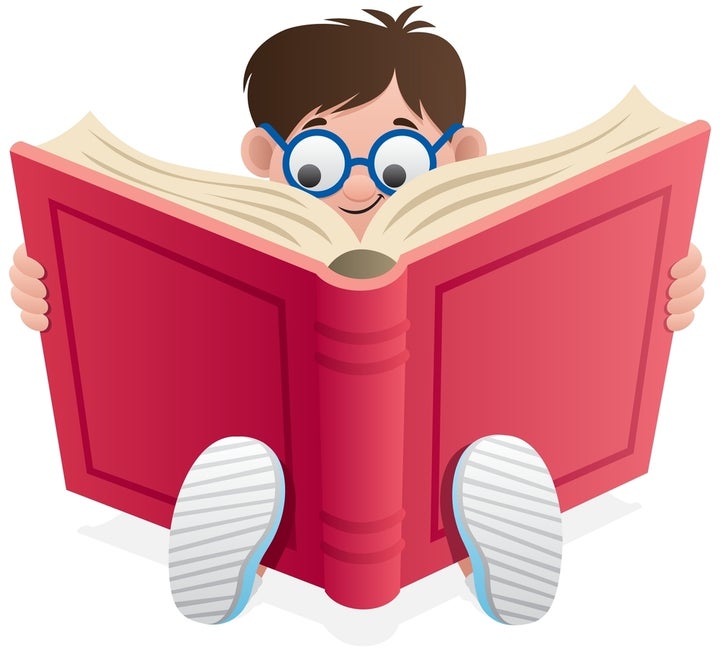
Today we are having a conversation with Dr. Deep Sran and Jay Goyal, co-founders of Actively Learn, an education technology company whose mission is to have every student find purpose and joy in reading to learn.
Research shows that most students are literate, so what problem are you addressing at Actively Learn?
The problem is that the majority of students don’t read for deep learning. In national tests, two out of three students cannot understand the main idea when they read. So yes, they can pronounce the letters and read the words, but too often students are not understanding much, and this is persistent from 4th through 12th grade.
What makes it difficult to be a good reader?
Many people think it is about accumulating skills, like being able to understand the main idea, but the reality is that it is much more complex.
Reading for depth means getting our brains to work harder and focus longer than they want to. Although we like to think of ourselves as intellectual, cogitating creatures, our brains are wired for efficiency and conservation of energy. The vast majority of thinking happens like a reflex: it's fast and automatic. The human brain prefers simplicity over complexity. This is why switching gears to thinking in a slow, deliberate way requires significant time and effort.
You talk about 3 roadblocks that prevent students from achieving depth in their reading. Can you tell us what those roadblocks are?
First, students do not know how to think when they read for depth. Reading for depth requires focused attention, the willingness to slow down and re-read certain passages, and a critical perspective that questions, evaluates, and engages in a discourse with the text. This way of thinking is not obvious and will not happen without guidance and structure.
Second, students cannot access the text at a basic level due to gaps in content knowledge, language barriers, or reading impairments. Even with the best of intentions, students who cannot make sense of what they read will not achieve depth.
Third, students have no idea whether they are on track with how they analyze and make sense of the text. They may put in a high level of effort, but the cognitive skills are still unfamiliar to them. Because their thinking is invisible, they continue to repeat the same mistakes, rely on misconceptions, and ultimately stop trying.
Can teachers help students improve their reading?
Definitely. What students learn is shaped by what is happening at home, their interest level, and their motivation. However, great teachers can overcome these challenges, and make learning meaningful and joyful for every student.
Having researched reading for several years, we’ve developed a 3-step approach that teachers can use to help their students: 1) activate thinking, 2) support thinking, and 3) reveal thinking. Each strategy is supported by four practices that can each have a significant impact.
Activating thinking entails showing students how to read for depth and ensuring that they adopt the strategies and thought processes of expert readers. Teachers activate thinking by modeling close reading, asking higher-order questions, encouraging students to annotate strategically, and facilitating discussion.
Supporting thinking enables students to access the text and receive the guidance they need. Teachers support thinking by making it possible for students to overcome common reading obstacles such as gaps in content knowledge or vocabulary deficits. They can scaffold rigorous texts, build background knowledge, build real-world vocabulary, and improve accessibility using technology with features like dyslexic settings, built-in foreign language translation, and text-to-speech.
Revealing thinking is a means of demonstrating the learning process in order to improve it. Teachers need to see how students construct knowledge to assess learning strategies and understand where students are struggling. Revealing thinking consists of having students write extensively while they read, use formative data, provide effective feedback, and cultivate metacognition.
Is this where Actively Learn comes in?
Exactly. On our platform, we help teachers activate, support, and reveal student thinking as they read. Teachers can use the plethora of content we offer or use on their own and implement the 12 key practices that promote reading for depth. And beyond just a platform, we know we have to provide professional development as well, so we have an online course to educate teachers about these practices and they can demonstrate proficiency by earning micro-credentials.
But what about the claims that digital reading is worse for people?
When comparing a paper book to a PDF, the research is mixed -- six studies have shown paper is better, whereas six others have shown no effect. Still, none have shown digital to be better for comprehension, with the theory being that the tactile experience of turning a page and looking at a physical object helps your neurons remember content better.
However, the studies focus on basic e-readers that are not designed to optimize learning. There is so much more you can do with digital content that overcomes the limitations of paper. For example, just having a point where students must stop and answer a question causes them to think in the moment; on paper there is nothing you can do to ensure that happens. At Actively Learn, we’ve seen over 85% of teachers and students report better understanding of text when reading while using our platform.
If schools can’t afford Actively Learn or don’t have enough technology, what is the advice you would give for them to improve reading?
It’s really about making reading a thinking exercise, so trying at least one practice for each thinking strategy. For example, asking higher-order questions to activate thinking, scaffolding gaps in background knowledge to support thinking, and making sure your students are writing a lot (even if they’re not being graded) to reveal thinking. We recommend trying at least one practice for each strategy because together they become more powerful for the student and the teacher. It is hard to do several of them and reach every student without the assistance of technology, but certainly several are possible to do.
Can you tell us a little bit more about yourselves and the impetus for starting Actively Learn?
We started Actively Learn because we both wanted to make education more effective and more equitable. By focusing on reading for deeper learning through technology, we’re able to improve how students engage with the central task in any educational or professional setting--reading--in a way that is accessible to every student.
Deep decided over 20 years ago to make improving education his life’s work. Leaving a financially rewarding job as an attorney, he went to graduate school to study critical thinking. After earning a PhD in educational psychology, he worked as a teacher and an administrator at a charter high school in DC. He then founded an independent school so that he could work with his fellow teachers to design and experiment with new ideas and practices to promote deeper learning and critical thinking. Seeing technology as a way to overcome the limits of the classroom, he designed a way to improve how students read online.
Similarly, I was committed to working on social causes, having been part of the TSA after 9/11 and working in microfinance in Honduras. After talking to Deep, I realized my business and tech background combined with his education expertise would make the perfect team to improve education in a fundamental way.
I was lucky enough to experience the power of great teaching with great texts, so I saw the potential in the ideas that became Actively Learn. One of my favorite books in high school was Of Human Bondage. It is a book no self-respecting 17 year old should enjoy, about a young, disabled man’s love of a woman who would not give him the time of day. But what lay beneath the surface, for example the issue of passion versus reason, revealed how thinking about something so deeply could uncover a hidden truth. We wanted to bring this experience--the meaning and joy of reading--to every student.
Help your kids read for depth - visit ActivelyLearn.com
